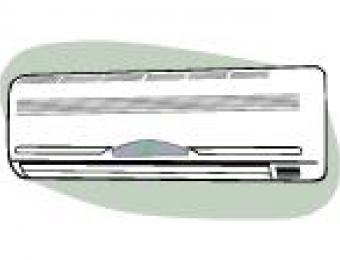Sunlight is undoubtedly the most reliable source of light - but the earth is by far the most consistent and reliable source of energy for heating and cooling. At a depth of about 3 metres below the ground, the temperature of the earth levels out to approximately 12-13° C, regardless of how hot or cold it is on the surface. Using a geothermal heat pump, this consistency can be harnessed to either heat or cool your home.
How a geothermal heat pump works
Geothermal heat pump systems (also known as ground-source heat pumps (GSHPs) or geothermal heat exchangers) take advantage of the ground temperature by running a large network of pipes through the ground, typically looped around either horizontally or vertically (as shown) to maximise the amount of pipe that's exposed to these constant temperatures. Refrigerant is then pumped around these pipes, either to heat or cool this refrigerant.
In essence, a geothermal heat pump system operates in exactly the same way as a regular refrigerant cooling system, with the exception being that the refrigerant is either cooled or heated by the temperature of the earth rather than by other means.
When used for cooling purposes, a geothermal heat pump uses the temperature of the earth as a heat sink, removing heat from the refrigerant. If it's used in reverse for heating, the earth is used as a heat source, warming the refrigerant. Geothermal heat pump systems can also be used as water heaters.
Is a geothermal heat pump right for me?
Geothermal heat pumps are very economical to run. In fact, the American Environmental Protection Agency has called geothermal heat pumps the most efficient method of residential heating and cooling available to home owners. The same system can also be used to supply hot water.
Despite this, these systems are still uncommon in Australia and (at least for the time being) and are very expensive to install. Geothermal systems normally require a fairly large yard, although piping can be run quite deep (up to 150m) down into the ground instead, if horizontal space is limited. While they are normally quite hardy, problems with piping can also be very expensive to repair.
|
Advantages
|
Disadvantages
|





